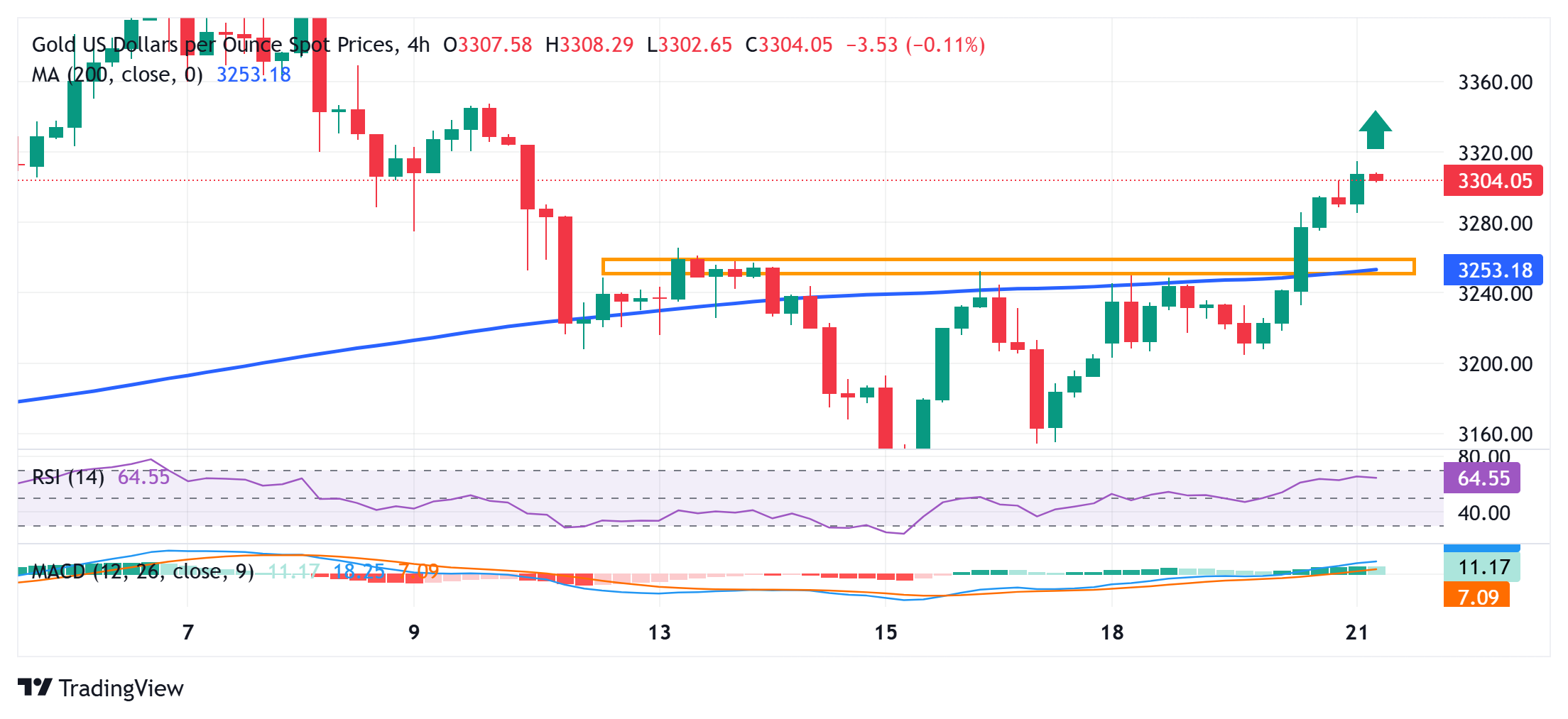Gold sticks to intraday gains near two-week top, trades above $3,300 mark

- Gold price scales higher for the third straight day amid sustained USD selling bias.
- US fiscal concerns and Fed rate cut bets drag the USD to a nearly two-week trough.
- US-China trade tensions and geopolitical risks further benefit the XAU/USD pair.
Gold price (XAU/USD) retains its positive bias above the $3,300 mark and trades near a one-and-a-half-week top through the first half of the European session on Wednesday. The US Dollar (USD) selling bias remains unabated in the wake of bets that the Federal Reserve (Fed) will cut interest rates further in 2025 and US fiscal concerns. This, in turn, is seen as a key factor pushing the commodity higher for the third straight day.
Meanwhile, , was seen as a key trigger for bullish traders. A subsequent move beyond the $3,300 mark and positive oscillators on hourly/daily charts validate the near-term constructive outlook for the Gold price. Hence, some follow-through strength towards testing the next relevant hurdle, around the $3,360-3,365 horizontal zone, looks like a distinct possibility. The momentum could extend further and allow the XAU/USD pair to reclaim the $3,400 round figure.
On the flip side, weakness below the Asian session low, around the $3,285 region, is more likely to attract fresh buyers and remain limited near the $3,260-3,250 resistance-turned-support. A convincing break below the latter, however, might prompt some technical selling and drag the Gold price to the $3,200 mark. This is closely followed by the $3,178-3,177 support, below which the XAU/USD could accelerate the fall towards last week’s swing low, around the $3,120 area, or the lower level since April 10, en route to the $3,100 mark.
US-China Trade War FAQs
Generally speaking, a trade war is an economic conflict between two or more countries due to extreme protectionism on one end. It implies the creation of trade barriers, such as tariffs, which result in counter-barriers, escalating import costs, and hence the cost of living.
An economic conflict between the United States (US) and China began early in 2018, when President Donald Trump set trade barriers on China, claiming unfair commercial practices and intellectual property theft from the Asian giant. China took retaliatory action, imposing tariffs on multiple US goods, such as automobiles and soybeans. Tensions escalated until the two countries signed the US-China Phase One trade deal in January 2020. The agreement required structural reforms and other changes to China’s economic and trade regime and pretended to restore stability and trust between the two nations. However, the Coronavirus pandemic took the focus out of the conflict. Yet, it is worth mentioning that President Joe Biden, who took office after Trump, kept tariffs in place and even added some additional levies.
The return of Donald Trump to the White House as the 47th US President has sparked a fresh wave of tensions between the two countries. During the 2024 election campaign, Trump pledged to impose 60% tariffs on China once he returned to office, which he did on January 20, 2025. With Trump back, the US-China trade war is meant to resume where it was left, with tit-for-tat policies affecting the global economic landscape amid disruptions in global supply chains, resulting in a reduction in spending, particularly investment, and directly feeding into the Consumer Price Index inflation.
